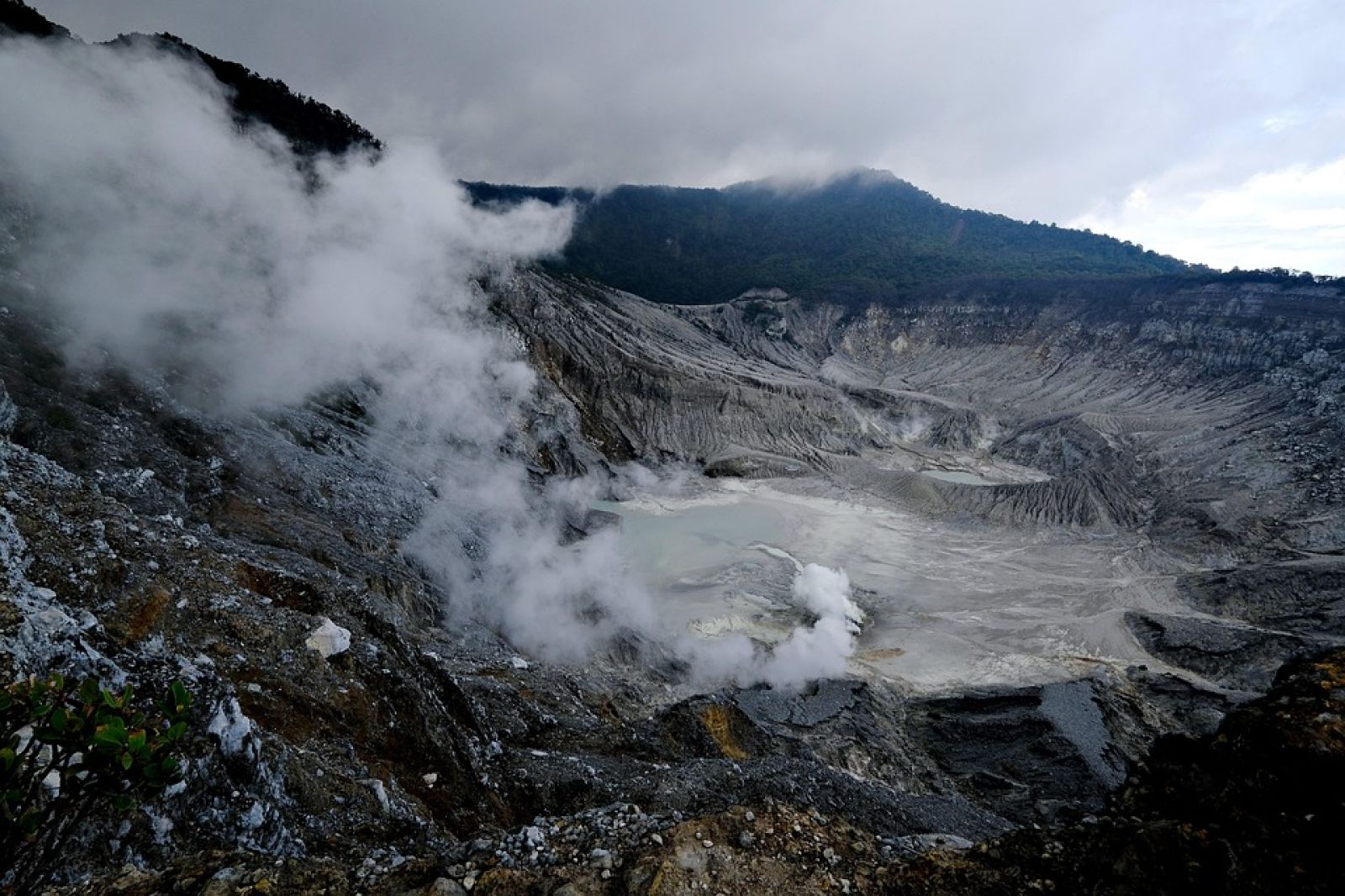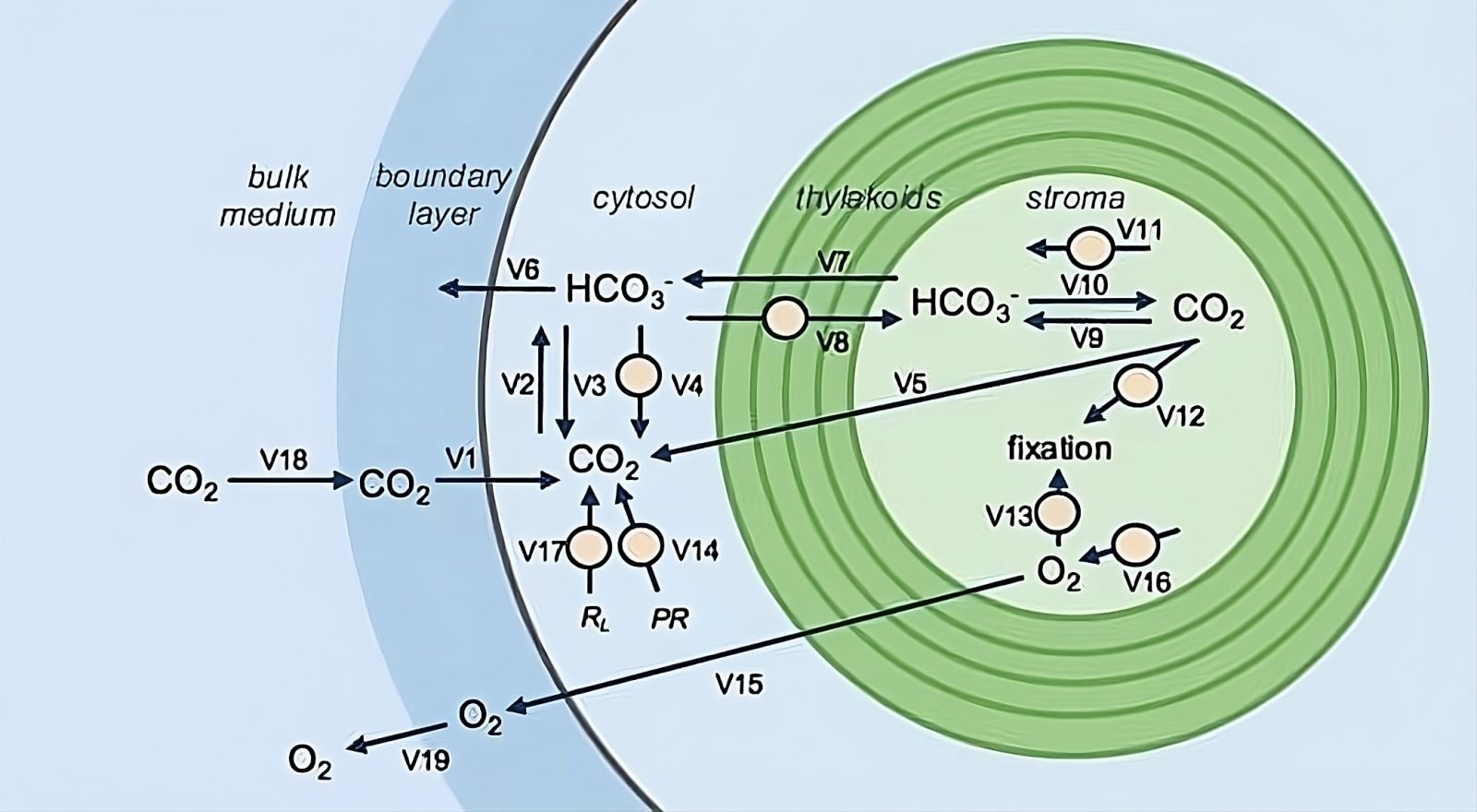This extreme volcanic algae reveals the secrets of photosynthesis 🌋
Follow us on Google News (click on ☆)

Illustration image from Pixabay
This algae, C. merolae, flourishes in acidic hot springs, an environment hostile to most forms of life. Scientists are studying how this organism performs photosynthesis under such conditions, offering unprecedented insights into this life-sustaining process.
The research team, led by Berkley Walker, published their findings in Plant Physiology. They developed a mathematical model to simulate the carbon concentration mechanism of C. merolae, a valuable tool for future studies.
Anne Steensma, co-lead author of the study, explains that C. merolae has a simplified version of the carbon concentration mechanism. This simplicity allows researchers to identify the essential elements of this process.
Collaboration with the university's statistics and probability department was crucial. Together, they refined the model to best reflect the actual behavior of the algae, paving the way for virtual experiments.
This model enables scientists to test various conditions on C. merolae, such as removing certain parts of its carbon concentration mechanism. These virtual experiments help understand which elements are indispensable for photosynthesis.

Model of the fluxes and reservoirs of dissolved inorganic carbon (CO₂, HCO₃⁻) and oxygen (O₂) in different cellular compartments. Enzymatic fluxes are indicated by circles, and certain processes such as photorespiration (PR) and light respiration (RL) are specified. All fluxes are reversible except those related to the production or consumption of matter.
Berkley Walker envisions using this knowledge to improve photosynthesis in other organisms. This research could have major implications for sustainable agriculture by increasing the efficiency of converting light into energy.
What is the carbon concentration mechanism?
The carbon concentration mechanism (CCM) is a biological process used by some photosynthetic organisms to increase the efficiency of photosynthesis. It works by concentrating carbon dioxide around the Rubisco enzyme, which catalyzes the first step of carbon fixation.
Under normal conditions, Rubisco can fix oxygen instead of CO2, an inefficient process called photorespiration. The CCM minimizes this loss by increasing the concentration of CO2 around Rubisco, thereby improving the efficiency of photosynthesis.
Land plants have developed complex structures for their CCM. Algae like C. merolae use simpler mechanisms, offering a unique perspective on the evolution of photosynthesis. Studying C. merolae allows scientists to understand the essential elements of the CCM.
Why study extremophile organisms?
Extremophile organisms, like C. merolae, live in environments considered hostile to most forms of life. These organisms have developed unique adaptations to survive high temperatures, extreme pH levels, or high concentrations of heavy metals.
Studying these organisms provides valuable data on the limits of life and the biological mechanisms that enable survival in extreme conditions. This knowledge can be applied to various fields, from biotechnology to astrobiology.
For example, understanding how C. merolae performs photosynthesis in acidic hot springs could inspire methods to improve the resistance of agricultural crops to environmental stresses, such as drought or salinity.
Moreover, enzymes and other molecules produced by extremophiles have industrial applications, such as in biofuel production or the treatment of toxic waste. These organisms are therefore a valuable resource for scientific and technological research.